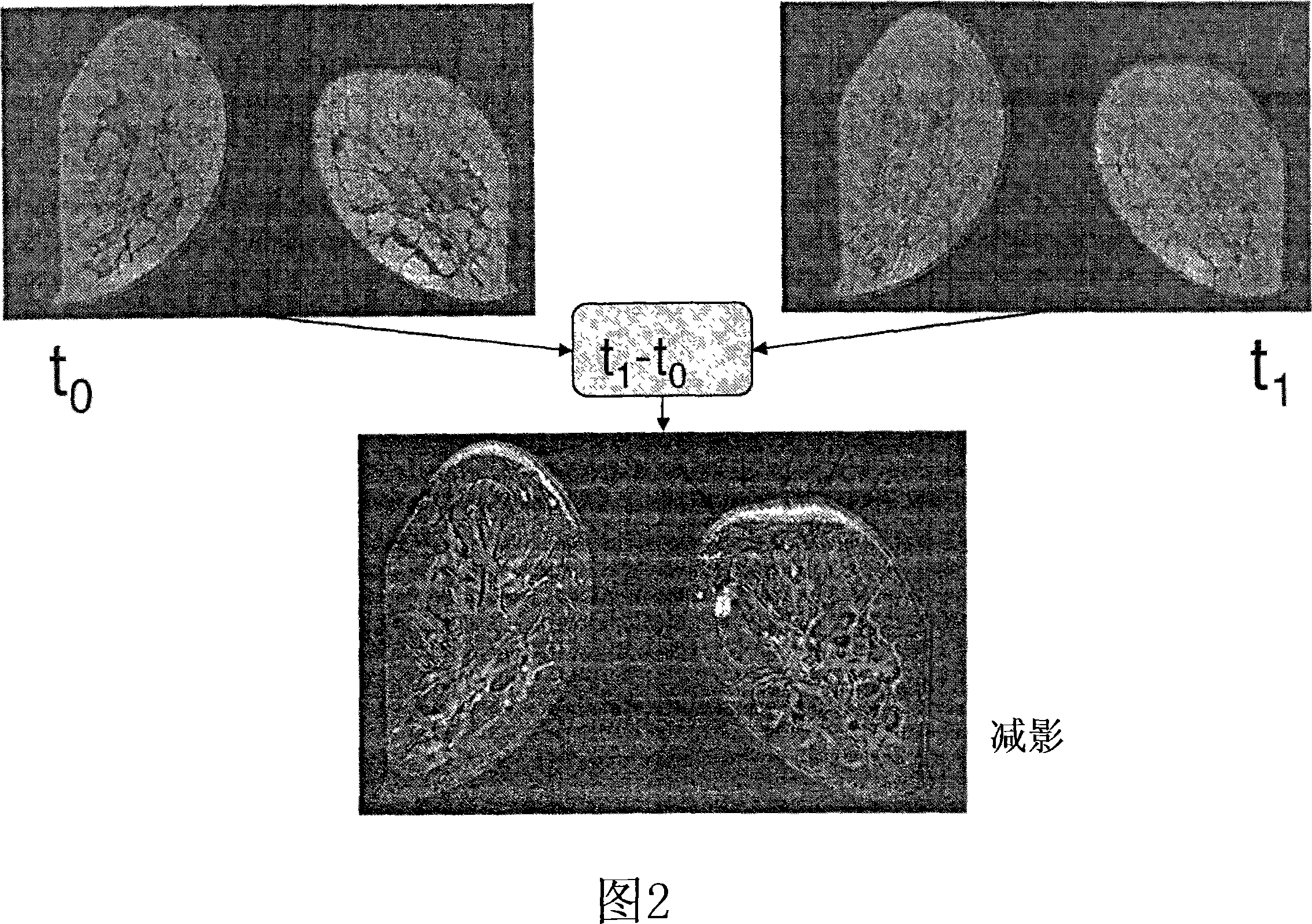Method and computer program product for registering biomedical images with reduced imaging arefacts caused by object movement
It is a technology of object movement and biomedicine, which is applied in computing, image enhancement, image analysis, etc., and can solve the problems of result influence, wrong image registration, etc.
- Summary
- Abstract
- Description
- Claims
- Application Information
AI Technical Summary
Problems solved by technology
Method used
Image
Examples
Embodiment Construction
[0056] Although a related aspect of the present invention is the generalization of the Lucas & Kanade algorithm from 2D to 3D, the illustrations below relate only to 2D images for easier understanding. A generalization of the method to three-dimensional images is given in a general description expressed in mathematical formulations.
[0057] Automatic feature selection in sets of cross-sectional images that work in 3D and thus to represent 3D volume data is essentially a generalization of Lucas&Kanade's 2D feature detection algorithm and is explained in more detail below:
[0058] Two image volumes of the same patient recorded within a short time difference were defined as I and J, respectively.
[0059] Within the first image volume I, a certain number of selected voxels must be identified, which will be considered features to be tracked between the two volumes.
[0060] Let I be the original / first image volume and J be the next volume in which to find the corresponding feat...
PUM
 Login to View More
Login to View More Abstract
Description
Claims
Application Information
 Login to View More
Login to View More - R&D
- Intellectual Property
- Life Sciences
- Materials
- Tech Scout
- Unparalleled Data Quality
- Higher Quality Content
- 60% Fewer Hallucinations
Browse by: Latest US Patents, China's latest patents, Technical Efficacy Thesaurus, Application Domain, Technology Topic, Popular Technical Reports.
© 2025 PatSnap. All rights reserved.Legal|Privacy policy|Modern Slavery Act Transparency Statement|Sitemap|About US| Contact US: help@patsnap.com



